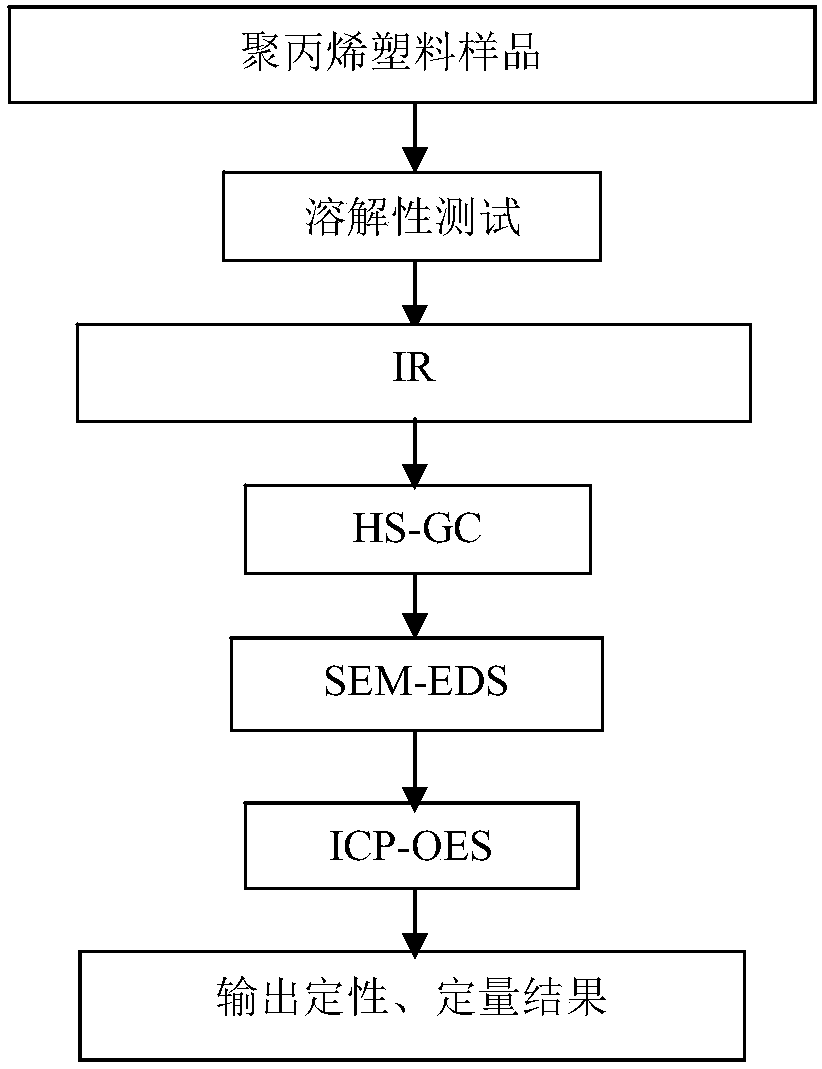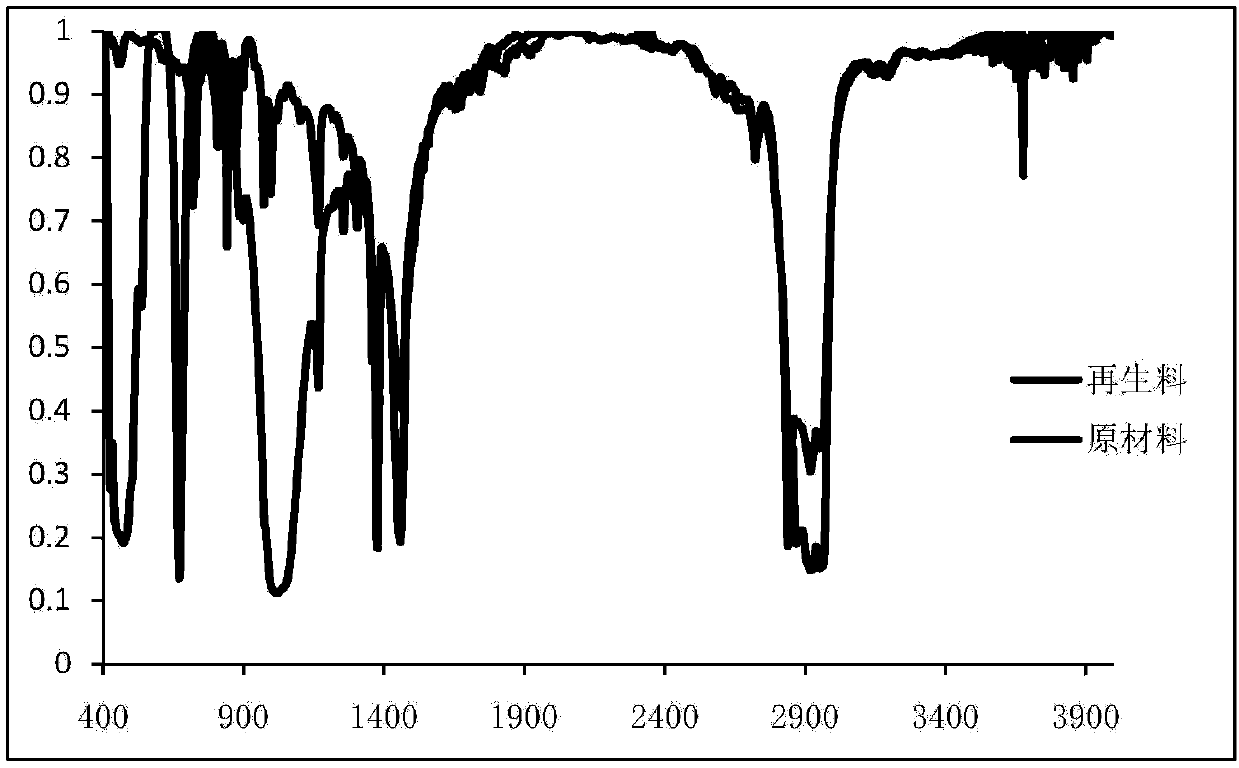Method for identifying polypropylene recycled material
A technology of polypropylene and recycled materials, which is applied in the direction of material separation, material analysis, and material inspection products, etc. It can solve the problems of inability to fundamentally distinguish between raw materials and recycled materials, inaccurate analysis and identification of recycled materials, simplicity and roughness, etc.
- Summary
- Abstract
- Description
- Claims
- Application Information
AI Technical Summary
Problems solved by technology
Method used
Image
Examples
Embodiment 1
[0039] An embodiment of the polypropylene recycled material identification method of the present invention, there is an unknown polypropylene sample, and it is judged whether it contains polypropylene recycled material, the analysis method is as follows:
[0040] (1) Solubility analysis: use toluene solution, place the sample in toluene solvent at 130°C, heat for 4 hours, the sample cannot be completely dissolved and becomes turbid (see attached figure 2 Shown), it is judged that the sample contains polypropylene recycled materials.
[0041] (2) Infrared spectrum analysis: Take 5ul of the solution after dissolving the polypropylene sample and drop it on the KBr tablet, bake it in an oven at 70°C for 0.5h, and test the infrared spectrum, as shown in the attached image 3 As shown, compared with the standard polypropylene raw material spectrum, the infrared spectrum of the sample to be tested has obvious miscellaneous peaks, but the main characteristic peaks are consistent, con...
Embodiment 2
[0049] An embodiment of the polypropylene recycled material identification method of the present invention, there is an unknown polypropylene sample, and it is judged whether it contains polypropylene recycled material, the analysis method is as follows:
[0050] (1) Solubility analysis: put the sample in chloroform solvent, use an extraction device, heat to 70°C, and the heating time is 1h, the solution is turbid (see attached Figure 5 Shown), it is judged that the sample to be tested contains recycled polypropylene material.
[0051] (2) Infrared spectrum analysis: Take 5ul of the solution after dissolving the polypropylene sample and drop it on the KBr tablet, bake it in an oven at 70°C for 0.5h, and test the infrared spectrum, as shown in the attached Figure 6 As shown, compared with the standard polypropylene raw material spectrum, there are obvious miscellaneous peaks, but the main characteristic peaks are consistent, confirming that this is a polypropylene sample cont...
Embodiment 3
[0058] In this example, the identification standard of headspace gas chromatographic analysis is verified, and 5 polypropylene samples without recycled materials are set, which are samples No. 1 to 5 respectively; and 5 samples containing recycled materials are set, which are respectively No. Samples were analyzed by headspace gas chromatography: weigh 1.2g of the sample in a headspace bottle, heat the sample at 120°C for 4 hours, then enter the headspace gas chromatography for analysis, then stabilize it at 50°C for 3min, and then use The temperature was raised to 200°C at a rate of 12K / min, and finally stabilized at the final temperature of 200°C for 4 minutes. The data are shown in Table 3:
[0059] Table 3 Headspace gas chromatographic analysis data of samples 1 to 10
[0060]
[0061]
[0062] It can be seen from Table 3 that the peak time of No. 1-No. 5 polypropylene samples that do not contain recycled materials is all before 14 minutes, and the number of peaks is...
PUM
 Login to View More
Login to View More Abstract
Description
Claims
Application Information
 Login to View More
Login to View More - R&D
- Intellectual Property
- Life Sciences
- Materials
- Tech Scout
- Unparalleled Data Quality
- Higher Quality Content
- 60% Fewer Hallucinations
Browse by: Latest US Patents, China's latest patents, Technical Efficacy Thesaurus, Application Domain, Technology Topic, Popular Technical Reports.
© 2025 PatSnap. All rights reserved.Legal|Privacy policy|Modern Slavery Act Transparency Statement|Sitemap|About US| Contact US: help@patsnap.com



